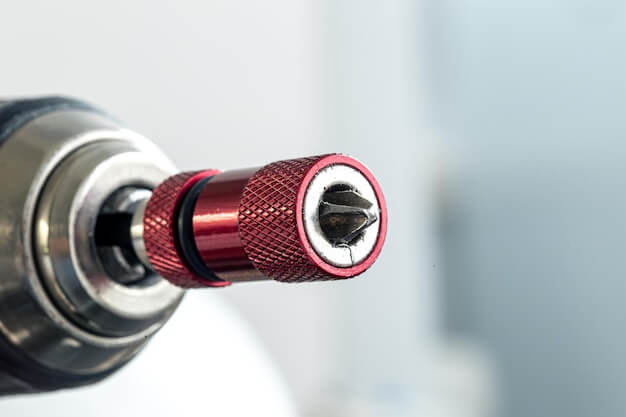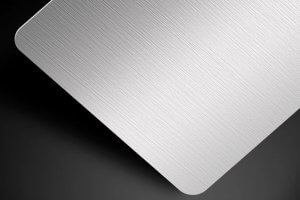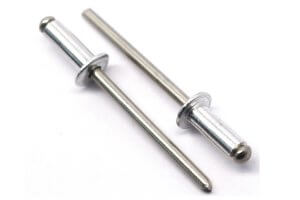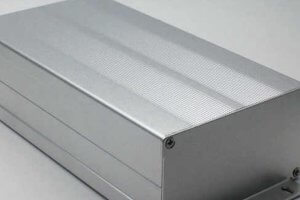Bead blasting is an essential component of computer numerical control (CNC) machining. It involves the use of tiny beads under high pressure to smooth out surfaces, deburr parts, remove surface deposits and provide a finish on metal, glass or plastic components.
In CNC machining, bead blasting plays a significant role in enhancing the aesthetics and functionality of manufactured parts by removing mill scales, weld discoloration and creating a uniform matte texture. Regardless of the part size or complexity, bead blasting provides a consistent and fine finish that cannot be surpassed by hand sanding or grinding processes.
To comprehend the process of bead blasting in better detail, let’s consider it as our product and understand how this technique is implemented within CNC machining forums:
1. Selecting Appropriate Media:
The first step lies with choosing the correct blasting media. The choice depends upon the particular application and material being processed. Glass beads are most commonly used due to their spherical shape and hardness which enable them to chip away at the surfaces without causing unnecessary damage. Other materials can include ceramic beads, aluminum oxide grit, steel shots etc.
2. Preparing Parts:
Prior to bead blasting, ensure all oils, grease and dirt have been removed from the component’s surface, either manually or using ultrasonic cleaning. This is important because these contaminants could interfere with the bead blasting process and potentially embed into the substrate surface.
3. Bead Blasting Process:
After preparation, the component is placed inside the bead blasting cabinet while operators wearing appropriate PPE manage this process. High pressurized streams of circular-shaped glass beads are blasted over the object’s surface efficiently smoothing sharp edges, polishing metallic surfaces and removing the outer layer if needed.
4. Post Processing:
Post blasting, the components must be thoroughly washed to rid any residual dust or blasting media stuck in crevices. Followed by drying, the now bead-blasted parts may need additional surface treatments like coating or plating, depending upon the final specification.
Throughout this process, many factors such as pressure levels and projection angle can be adjusted to customize the final appearance of the component. A higher blast pressure results in a rougher texture while lower pressures create finer finishes.

In CNC machining, bead blasting proves essential in maintaining part quality and improving their performance. For instance, crankshafts in automotive manufacturing after undergoing turning, grinding and heat treatment processes are bead blasted not only for surface cleanliness but also to improve fatigue resistance by inducing compressive stress.
To conclude, bead blasting is more than just a finishing technique; it’s an art form that requires experienced operators, keen attention to detail, and stringent safety measures. Its wide range of applications across various industries cements its importance within CNC machining and beyond. Whether you’re dealing with small metal coins or giant aerospace components, bead blasting provides an uniform, appealing and durable finish which speaks volumes about your commitment to product quality.
Other Articles You Might Enjoy
- The Economics of Using Recycled Materials in CNC Machining
Introduction to CNC Machining and Recycled Materials CNC (Computer Numerical Control) machining stands as a cornerstone in modern manufacturing, enabling the precise and automated cutting of materials into specific shapes…
- High-Precision CNC Machining for Custom Optical Lenses
Introduction to CNC Machining and its Significance in Custom Optical Lenses CNC - Computer Numerical Control machining, is a highly precise process employed for the production of complex parts with…
- Innovative CNC Machining for Advanced Spacecraft Components
Introduction: CNC Machining and its role in Spacecraft Components Computer Numerical Control (CNC) machining has, over the years, proven to be one of the most integral pillars within manufacturing industries.…










 Afrikaans
Afrikaans Albanian
Albanian Amharic
Amharic Arabic
Arabic Armenian
Armenian Azerbaijani
Azerbaijani Basque
Basque Belarusian
Belarusian Bengali
Bengali Bosnian
Bosnian Bulgarian
Bulgarian Catalan
Catalan Cebuano
Cebuano Chichewa
Chichewa Chinese (Simplified)
Chinese (Simplified) Chinese (Traditional)
Chinese (Traditional) Corsican
Corsican Croatian
Croatian Czech
Czech Danish
Danish Dutch
Dutch English
English Esperanto
Esperanto Estonian
Estonian Filipino
Filipino Finnish
Finnish French
French Frisian
Frisian Galician
Galician Georgian
Georgian German
German Greek
Greek Gujarati
Gujarati Haitian Creole
Haitian Creole Hausa
Hausa Hawaiian
Hawaiian Hebrew
Hebrew Hindi
Hindi Hmong
Hmong Hungarian
Hungarian Icelandic
Icelandic Igbo
Igbo Indonesian
Indonesian Irish
Irish Italian
Italian Japanese
Japanese Javanese
Javanese Kannada
Kannada Kazakh
Kazakh Khmer
Khmer Korean
Korean Kurdish (Kurmanji)
Kurdish (Kurmanji) Kyrgyz
Kyrgyz Lao
Lao Latin
Latin Latvian
Latvian Lithuanian
Lithuanian Luxembourgish
Luxembourgish Macedonian
Macedonian Malagasy
Malagasy Malay
Malay Malayalam
Malayalam Maltese
Maltese Maori
Maori Marathi
Marathi Mongolian
Mongolian Myanmar (Burmese)
Myanmar (Burmese) Nepali
Nepali Norwegian
Norwegian Pashto
Pashto Persian
Persian Polish
Polish Portuguese
Portuguese Punjabi
Punjabi Romanian
Romanian Russian
Russian Samoan
Samoan Scottish Gaelic
Scottish Gaelic Serbian
Serbian Sesotho
Sesotho Shona
Shona Sindhi
Sindhi Sinhala
Sinhala Slovak
Slovak Slovenian
Slovenian Somali
Somali Spanish
Spanish Sundanese
Sundanese Swahili
Swahili Swedish
Swedish Tajik
Tajik Tamil
Tamil Telugu
Telugu Thai
Thai Turkish
Turkish Ukrainian
Ukrainian Urdu
Urdu Uzbek
Uzbek Vietnamese
Vietnamese Welsh
Welsh Xhosa
Xhosa Yiddish
Yiddish Yoruba
Yoruba Zulu
Zulu